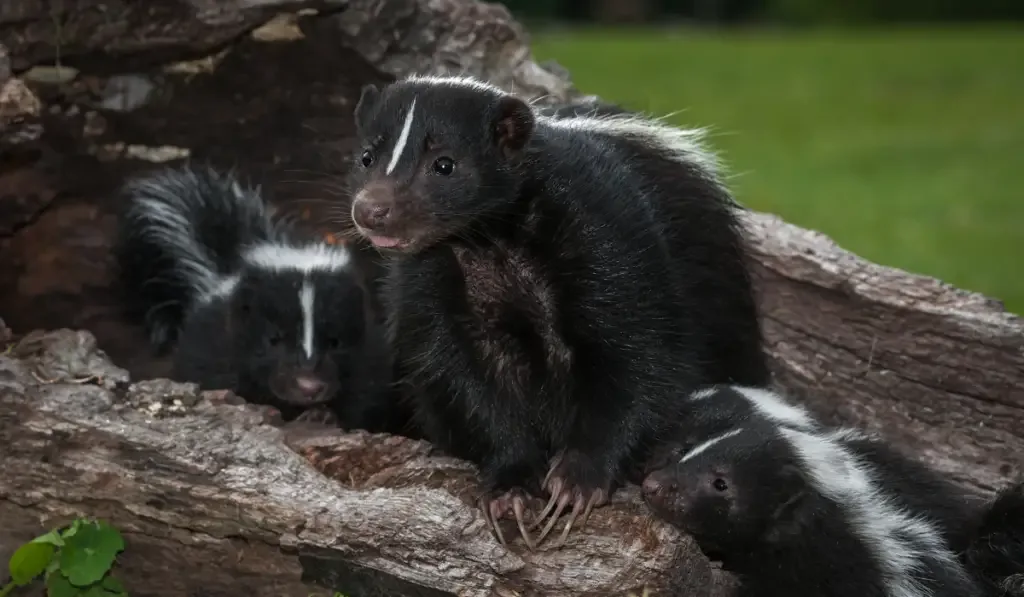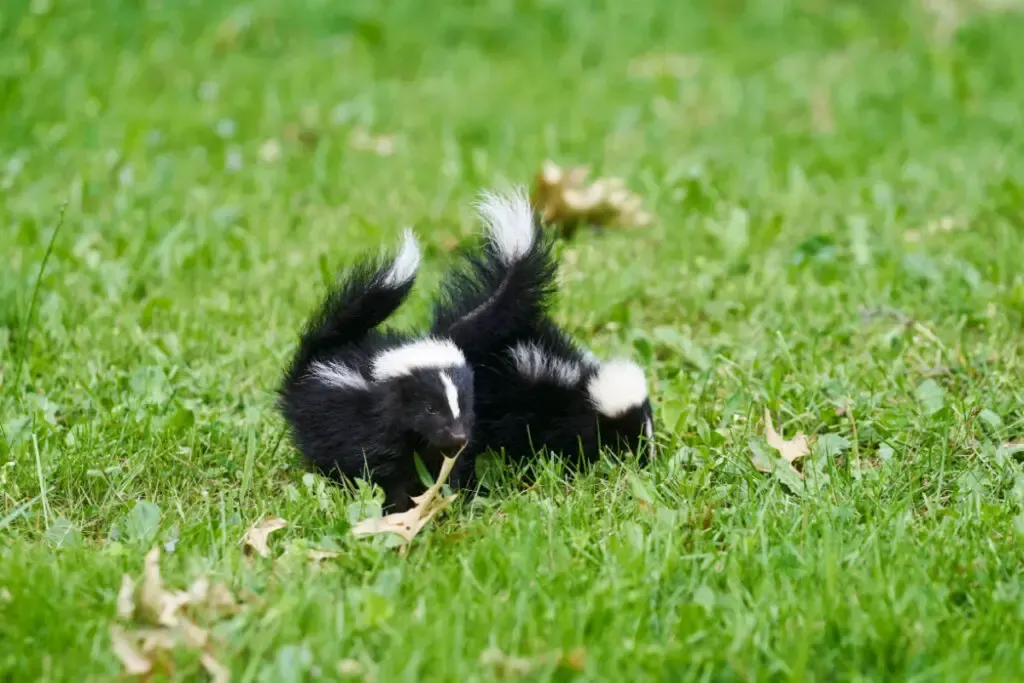Skunks are not the most pleasant smelling animal out there, however, they are kind of cute when you really get a good look at them. They have the face of a ferret and the body of a large, fluffy cat. Does that mean that they also have whiskers?
Skunks do have whiskers just like cats, dogs, and other animals often have and they act as almost a sixth sense of sorts.
Skunks use their whiskers to gather information about their surroundings. These whiskers allow skunks to perceive vibrations, textures, movement, and other things to help them survive. Whiskers are not just cute little hairs on a skunk’s face; they are essential to their survival in nature during the cover of darkness.
Let’s learn more about a skunk’s relationship with its whiskers to understand exactly why they are so vital.

Table of Contents
Why Do Skunks Have Whiskers?
Skunks have whiskers because they are a necessary tool for their survival as nocturnal animals.
Skunks prefer to move and find food during the night when the light is low and it can be hard to see. They utilize their whiskers to help them feel objects, textures, and more during the darkness.
Their whiskers are able to provide vital information to the skunk’s sensory system. These whiskers help skunks navigate dark paths in nature when things can get dangerous for small animals like skunks.
Can a Skunk Feel Their Whiskers?
A skunk can feel their whiskers in a way, however, the base of the whisker holds all the nerve endings. This is what allows the skunks to register and decipher any slight movement each whisker makes.
You may observe that skunks and other animals turn away when their whiskers touch or brush up against something. This is because the animal can feel the pressure as well as the movement at the base of the whisker and it can be uncomfortable at times.
What Do Skunk Whiskers Look Like?
A skunk’s whiskers are long and thick, located mostly on their face. Their whiskers are most visible around their muzzles, however, they also have some under their chin and over their eyes. Their whiskers are often white, but sometimes they can be brown, black, or a combination of colors depending on the skunk.
The whiskers on a skunk are noticeably thicker than their regular hair. A skunk’s whiskers are also much longer than other the hair on a their face. They will often be different lengths with some much longer or much shorter than others.

What Happens If a Skunk Loses Their Whiskers?
If a skunk loses its whiskers by either intentional or accidental means, it could spell danger for them. Losing one or two whiskers will not cause a problem, but losing them all is another story altogether. A skunk relies on its whiskers to help it navigate in the dark, so without them, a skunk will have to rely on its instincts.
If a skunk goes the wrong direction or tries to fit into a hole or area too small, it could get stuck or worse, suffer a fatal injury. Without their whiskers, skunks are vulnerable to the dangers of the night. While it may sound overly dramatic, a skunk really does need their whiskers to survive outdoors.
Will a Skunk’s Whiskers Grow Back?
A skunk’s whiskers will grow back eventually, as long as there is not extensive trauma to the whisker area on their face. It will take several weeks or even months for their whiskers to grow back, but it is possible.
Just because their whiskers will likely grow back, it does not mean that you should intentionally trim or remove a skunk’s whiskers. This is also true for any mammal including cats and dogs.
What Other Animals Have Whiskers?
There are many animals in the world that have whiskers including cats, dogs, mice, bears, deer, rats, possums, rabbits, and ferrets.
There are even some marine-based animals that have whiskers including seals and otters. The truth is, almost every mammal has whiskers, although they are not always just on the animal’s face. Foxes, for example, have whiskers on their face as well as their front legs.
Not all animal whiskers serve the same purpose, however. A bear’s whiskers are on their face, however, bears are unable to use them to sense anything special like skunks can.

Concluding Thoughts
Skunks do have whiskers and they have them for a reason. Skunks are able to use their whiskers to better understand their surroundings and keep themselves out of harm’s way when needed.
Whiskers have a much deeper importance than what you may think just by looking at them. They can often mean the difference between life and death for an outdoor animal like a skunk.
Resources:
Discovering the reason why skunks have whiskers was a truly educational experience. I utilized the following sources to write this article.
- https://northamericannature.com/why-do-animal-have-whiskers/
- https://northamericannature.com/physical-characteristics-of-bears/
- https://northamericannature.com/how-do-foxes-navigate/
- https://www.discoverwildlife.com/animal-facts/mammals/how-do-whiskers-work/
- https://www.humanesociety.org/resources/what-do-about-skunks
- https://www.jpost.com/science/a-small-whiskered-world-facial-hair-across-the-animal-kingdom-689071

